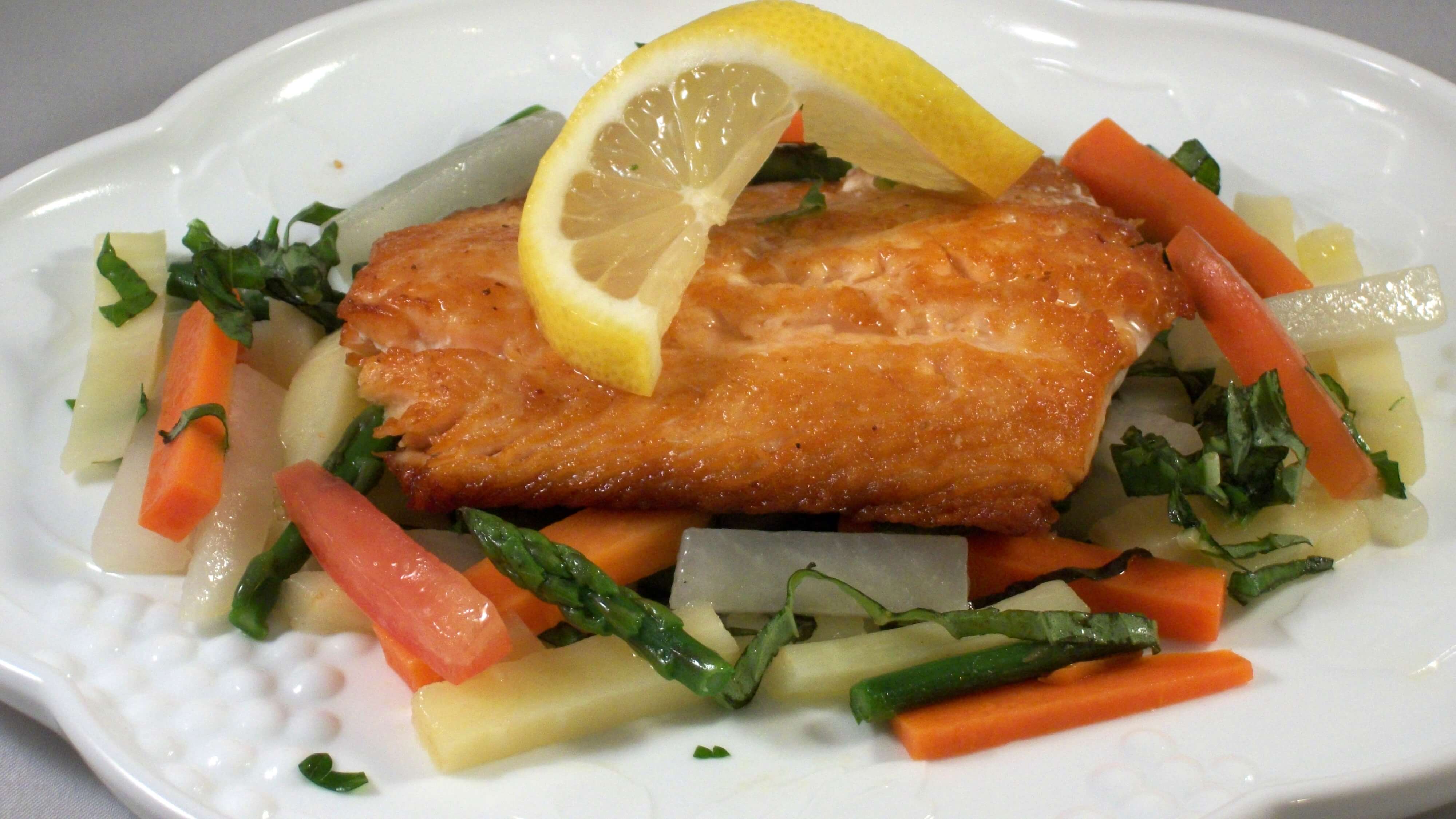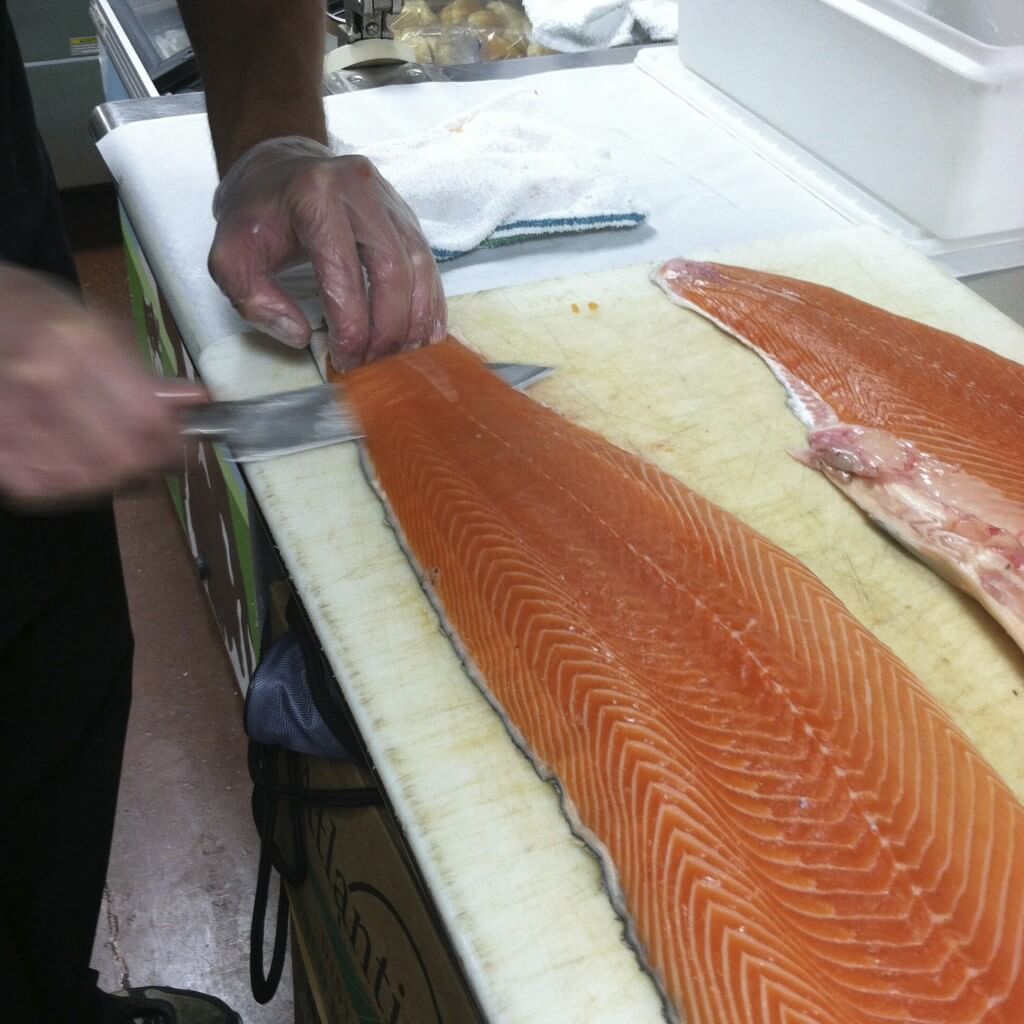Salmon Love & Learning
Patti Cook, BA, MS, Ed.D., Culinary Grad and B & P Student (Photo Credit)
One of the best things about any educational experience is learning new things that sometimes surprise and delight you even though you initially think you’ll hate them. I’ve lived my life believing I didn’t like salmon, so I wasn’t looking forward to that assignment in the culinary program. Was I surprised! Turns out that our taste buds really do change over time.
The seafood units turned out to be some of my very favorites because I learned fish and seafood, including salmon, are over-the-top delicious when properly cooked. Also, as a health-conscious chef, I’m very well aware that any advice on how to eat healthier includes eating more fish. Salmon is especially good for you because it is rich in omega-3s (the really-good-for-you fat). And perhaps not so coincidentally, the man I was falling madly in love with at the time is a seafood lover. It was a total win-win.
Like many people, I like and enjoy eating fish. Like many people, I was also more likely to eat it in a restaurant than make it at home. A fear of not really knowing how to cook fish correctly keeps many people from trying it. This salmon recipe is a tear-it-out, use-it-forever basic for cooks looking to bring fish into their kitchens. From my kitchen seat, the best part of the lesson is that it has turned my kitchen into my loved one’s favorite place for a fish or seafood dinner.
Tips for Salmon Success:
1. Plan on a 4- to 6-ounce fillet for each serving. It is so succulent and rich in flavor that if you have a real salmon lover you may want to get extra.
2. A key is to get the pan really hot so the salmon sears and creates a golden crust.
3. Salmon is often served on the rare side; however, I found I like mine more well done. Test for doneness by using a fork to see if the fish flakes toward the center.
4. The salmon is both beautiful and delicious served on top of steamed vegetables—they provide a nicely balanced and colorful plate.
5. Wild salmon has a meatier, richer flavor than farmed salmon, which tends to have a milder flavor and softer texture.
- Use a paper towel to gently pat the salmon dry. Season with salt and pepper or other seasoning or spice blend.
- Heat 1-2 tablespoons of high-heat oil (like canola or sunflower) in a skillet over medium-high heat.
- When the oil is hot, place salmon fillets skin-side down in the pan (place the fillet in the hot oil away from yourself to prevent it spattering).
- Cook, undisturbed, until the salmon forms a golden crust and the opaque color comes halfway up the side. Gently turn it over and cook until the other side is golden brown and the fish is cooked through (to at least 140°F); it should flake easily.



